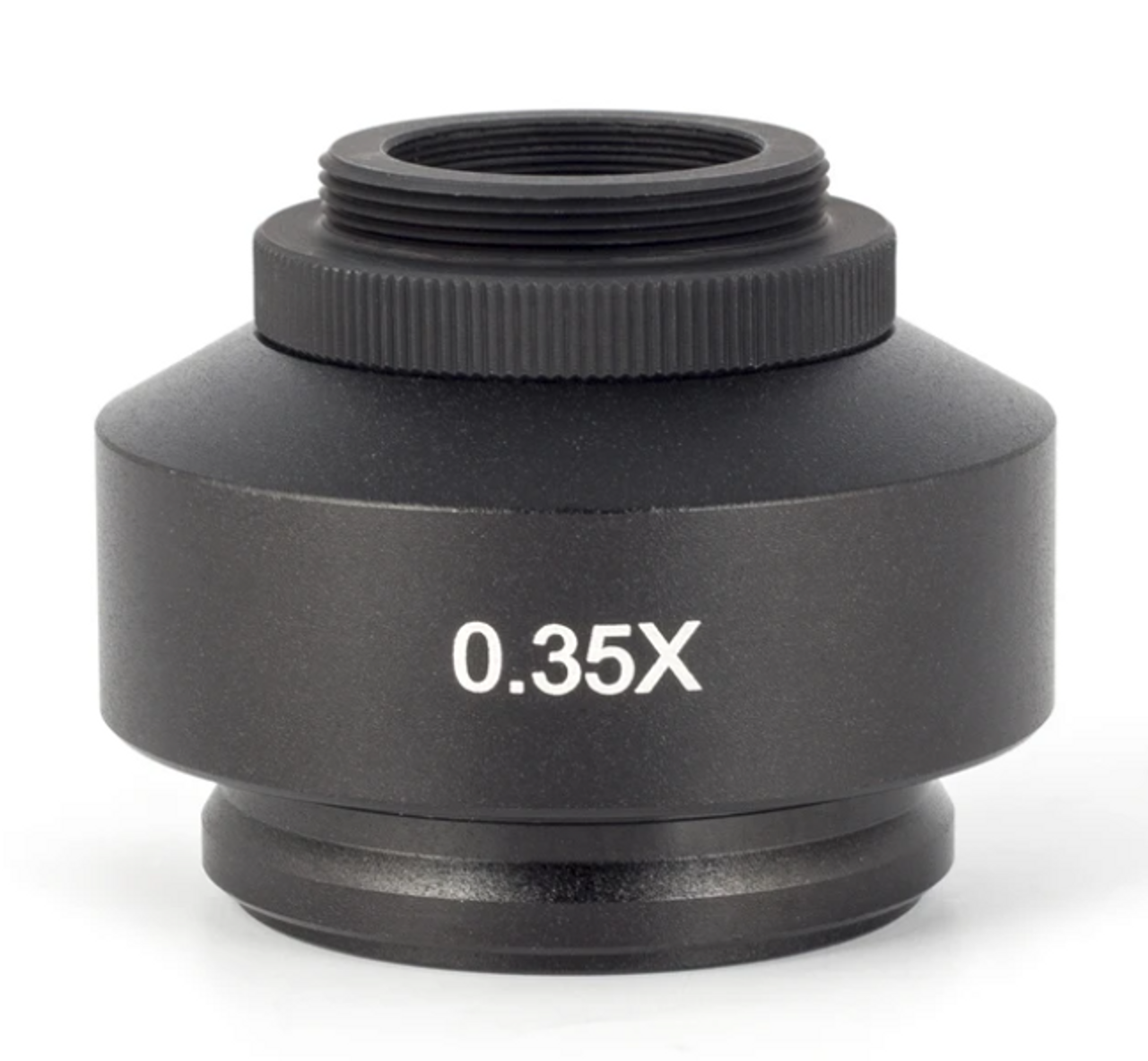A digital microscope camera makes it possible
to share the wonder and excitement of a hidden world.
Digital microscope cameras come in many formats for capturing, interpreting, and displaying microscopy images.
A digital microscope camera may connect to a desktop computer using a wired cable so that images can be viewed, measured, and recorded on the computer monitor.
Some digital microscope cameras connect wirelessly using mobile device apps or offer microSD card slots for storing images to be viewed later.
Digital microscope cameras with built in viewing monitors are a popular educational tool which make it easy for students and colleagues to share a simultaneous viewing experience.

Regardless of the type of camera chosen, connecting a digital camera to a microscope needs one more device, called a C-mount, to make the camera and microscope work together.

Only microscopes with a trinocular port can use a C-mount to connect a microscope camera.

What is a C-mount and how does it work?
C-mounts solve a mismatch between how digital chip makers and microscope companies design their respective devices.
Microscopes aim to provide the scientist with the widest possible field of view (FOV) to see as much of the sample at once.
Therefore, microscope eyepieces and objectives are round.
Digital chips and sensors are built to maximize efficiency and pack the most power into the smallest space – hence, they are square.
To increase the field of view accessible to the digital chip a reducing lens is used to decrease magnification and expand the scope of what can be seen by the sensor.
The image below shows how much sample would be visible to the camera sensor if a 1x C-mount were used.

Approximately 10% of the total field of view can be captured. It is very disappointing and not representative of the true image.
C-mounts with .35x or .5x magnification increase the field of view to nearly 77% of the sample, as seen below.

Are there any other ways to connect a digital camera to a microscope?
Using a C-mount to connect a digital camera through a trinocular port sacrifices resolution in favor of greater image coverage.
Digital microscope cameras can be fitted onto an eye-piece using an eyepiece adapter.

An eyepiece adapter screws into the base of the digital camera and is held in place using a trio of screws on the outside of the adapter.
The disadvantage of mounting a microscope camera this way is the inability to use the microscope while using the camera and a smaller field of view.
However, when viewing images through the eyepiece, the full image magnification can be seen.
What microscopes need a C-mount to connect a digital camera?
All light microscopes require a C-mount.
This includes upright (compound) microscopes used for viewing samples on microscope slides; inverted microscopes used for viewing live cells, and stereo (dissecting) microscopes used in many different industries.
Can I use any C-mount to connect any camera to any microscope?
No. C-mounts are designed by each manufacturer to mate with specific cameras and microscopes.
C-Mounts from Motic are only guaranteed to be compatible with Motic brand microscopes.
It is possible that a Motic C-mount may work with a different brand digital camera and microscope, but the manufacturer needs to be consulted to confirm.
When your microscopy work calls for dazzling and compelling images, trust Stellar Scientific and Motic to deliver results at an exceptional price.


